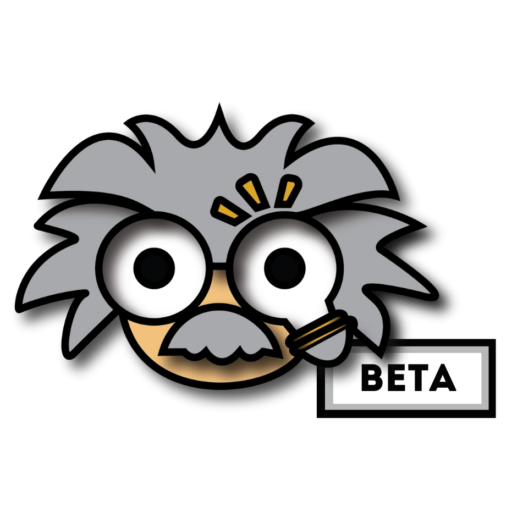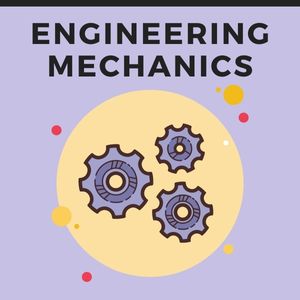ratings
Engineering mechanics is the application of mechanics to solve problems involving common engineering elements. The primary purpose of the study …
Unlimited Duration
May 6, 2024
34
1 day, 12 hours
Engineering mechanics is the application of mechanics to solve problems involving common engineering elements. The primary purpose of the study of engineering mechanics is to develop the capacity to predict the effects of force and motion while carrying out the creative design functions of engineering.
Mechanics may be divided into three branches: statics, which deals with forces acting on and in a body at rest; kinematics, which describes the possible motions of a body or system of bodies; and kinetics, which attempts to explain or predict the motion that will occur in a given situation.
Studens
About Instructor
More Courses by Insturctor
Course Currilcum
-
- Introduction of Subject 00:29:00
-
- Classification of Resources of Force system 00:20:00
- Part 1-Composition and Resolution of Forces theory 00:13:00
- Part 2-Composition and Resolution of Forces theory 00:15:00
- Part 3-Composition and Resolution of Forces theory 00:12:00
- Problem based on Resolution of Forces(Solution of problem 1-3) 00:17:00
- Problem based on Resolution of Forces(Solution of problem 4) 00:11:00
- Problem based on Resolution of Forces(Solution of problem 5) 00:14:00
- Problem based on finding resultant of Coplanar Concurrent Forces(Solution of problem 6) 00:13:00
- Resultant of Coplanar Concurrent Forces(Solution of problem 7) 00:21:00
- Resultant of Coplanar Concurrent Forces(Solution of problem 8) 00:13:00
- Resultant of Coplanar Concurrent Forces(Solution of problem 9) 00:12:00
- Resultant of Coplanar Concurrent Forces(Solution of problem 10) 00:12:00
- Resultant of Coplanar Non-Concurrent Forces(Solution of problem 11) 00:17:00
- Resultant of Coplanar Non-Concurrent Forces(Solution of problem 12) 00:29:00
- Resultant of Coplanar Non-Concurrent Forces(Solution of problem 13) 00:21:00
- Resultant of Coplanar Non-Concurrent Forces(Solution of problem 14) 00:24:00
- Resultant of Coplanar Non-Concurrent Forces(Solution of problem 15) 00:15:00
- Introduction of Centroid 00:29:00
- Problem based on centroid composite figure (Solution of problem 1) 00:24:00
- Problem based on centroid composite figure with a removed area (Solution of problem 2) 00:19:00
- Problem based on centroid composite figure with a removed area (Solution of problem 3) 00:17:00
- Problem based on centroid of shaded area (Solution of problem 4) 00:13:00
- Problem based on centroid of shaded area (Solution of problem 5) 00:20:00
- Problem based on centroid of shaded area (Solution of problem 6) 00:18:00
- Problem based on centroid of shaded area (Solution of problem 7) 00:25:00
- Problem based on centroid of shaded area (Solution of problem 8) 00:23:00
- Introduction & theory related to Friction 00:20:00
- Problem based on Connected blocks (Solution of problem 1) 00:19:00
- Problem based on Connected blocks (Solution of problem 2) 00:24:00
- Problem based on Ladder friction (Solution of problem 3) 00:20:00
- Problem based on Connected blocks (Solution of problem 4) 00:20:00
- Problem based on Connected blocks (Solution of problem 5) 00:22:00
- Problem based on Beams and Roller (Solution of problem 6) 00:15:00
- Problem based on Connected blocks (Solution of problem 7) 00:21:00
- Problem based on blocks place on each other (Solution of problem 8) 00:19:00
- Problem based on Ladder friction (Solution of problem 9) 00:24:00
- Problem based on Wedge friction (Solution of problem 10) 00:22:00
- Problem based on Wedge friction (Solution of problem 11) 00:23:00
- Problem based on Wedge friction (Solution of problem 12) 00:24:00
- Problem based on Wedge friction (Solution of problem 13) 00:24:00
- Problem based on Ladder friction (Solution of problem 14) 00:17:00
- Theory related to motion of Translation, Rotation, General Plane Motion, Instantaneous Centre of Rotation 00:18:00
- Problem based on Uniform motion (Solution of problem 1) 00:17:00
- Problem based on Rotational motion (Solution of problem 2) 00:13:00
- Problem based on Rotational motion with Variable acceleration (Solution of problem 3) 00:08:00
- Problem based on Motion of Rotation & Translation (Solution of problem 4) 00:15:00
- Problem based on Instantaneous Centre of Rotation (Solution of problem 5) 00:22:00
- Problem based on Instantaneous Centre of Rotation (Solution of problem 6) 00:23:00
- Problem based on Instantaneous Centre of Rotation (Solution of problem 7) 00:18:00
- Problem based on Instantaneous Centre of Rotation (Solution of problem 8) 00:23:00
- Problem based on Instantaneous Centre of Rotation (Solution of problem 9) 00:13:00
- Problem based on Instantaneous Centre of Rotation (Solution of problem 10) 00:22:00
- Problem based on Instantaneous Centre of Rotation (Solution of problem 11) 00:21:00
- Problem based on Instantaneous Centre of Rotation (Solution of problem 12) 00:24:00
- Theory related to particle in motion & connected masses 00:16:00
- Problem based on Work energy principle for particle in motion (Solution of problem 1) 00:22:00
- Problem based on dependent connected bodies (Solution of problem 2) 00:22:00
- Problem based on Spring (Solution of problem 3) 00:10:00
- Problem based on Spring (Solution of problem 4) 00:14:00
- Problem based on dependent connected System (Solution of problem 5) 00:18:00
- Problem based on Work energy principle for particle in motion (Solution of problem 6) 00:17:00
- Problem based on Connected masses (Solution of problem 7) 00:19:00
- Problem based on Spring action (Solution of problem 8) 00:26:00

